Corals are usually divided into several types such as large corals, small corals, soft corals and sea anemones. It should be noted that corals are animals, not plants. Coral not only resembles plants in shape, but also has bright and gorgeous colors. do you know? Some corals are simply stunning in appearance. This article will introduce you to the ten most beautiful corals in the world, including the following species: Christmas tree worms, bubble corals, splayed brain corals, cup corals, leather mushroom corals, finger corals, tube worms, tiger ear mushrooms, lilac polyps, and giant corals. Brain coral. These corals are renowned in the marine life community for their unique appearance and stunning beauty.
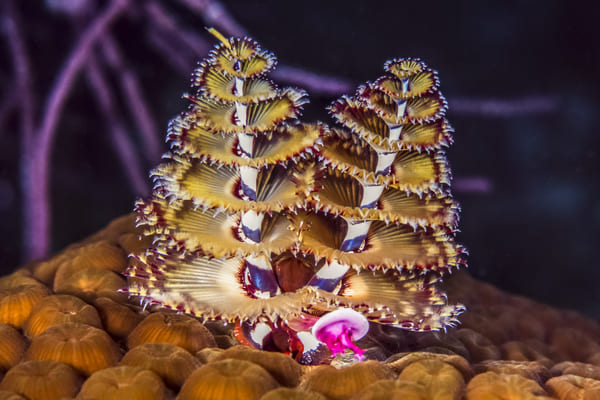
1. Christmas tree worm
Christmas tree worms are a type of tubeworm that gets its name from its two charming tentacles that resemble a Christmas tree. These tentacles are actually their feeding organs and are so sensitive that they can react immediately to even the slightest shadow. These charming Christmas tree worms come in a variety of colors, including yellow, orange, blue and white, and are so beautiful that they have become one of the most important features people look for when looking for Christmas tree worms. Christmas tree worms are widely distributed in tropical oceans around the world and feed primarily on zooplankton.
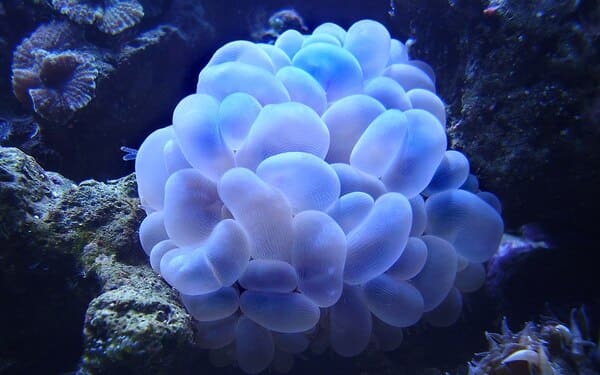
2. Bubble coral
Bubble coral, scientific name Plerogyra sinuosa, belongs to the soft coral category. They are distributed along the Pacific, Atlantic and Caribbean coasts and live in waters within a depth of 30 meters. This type of coral has unique characteristics: Bubble corals are so beautiful that they need light to swell and expand. When unfolded during the day, the coral appears in the shape of bubbles in white, purple, yellow and other colors, looking like shiny and transparent bubbles, pearls or grapes. When they are inactive, they can be seen to have a hard skeleton, and it is due to this feature that bubble corals get their name from their appearance.
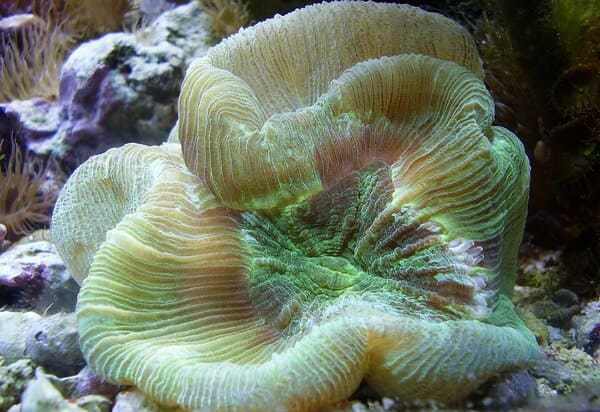
3. Eight-character brain coral
Eight-shaped brain coral, also known as open brain coral, is the most common and very tenacious coral species in aquariums. They often display a variety of brilliant colors, including green or red fluorescence, or a patchwork of colors. Additionally, they come in a variety of attractive colors including brown, pink, and even blue. Initially, their skeletons are tapered, but as they grow, their shape gradually reveals a structure similar to the number "8", hence the name eight-figure brain coral.
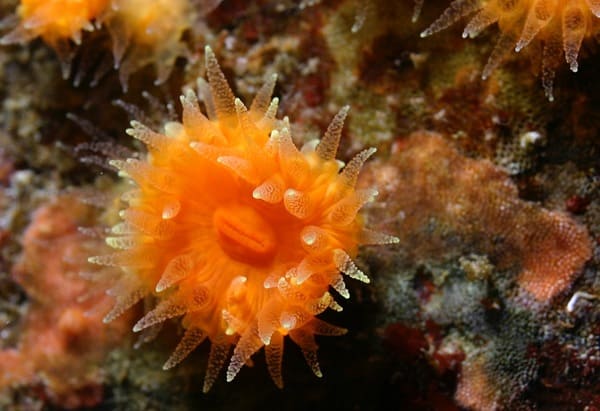
4. Cup coral
Cup coral is one of the fascinating corals originating from the deep sea. Unlike other corals, cup corals are not attached to coral reefs, but rely on plankton for their survival. At night, they extend their translucent tentacles, displaying their unique beauty. A treasure of the ocean, cup corals are renowned for their vibrant colors and unusual shapes, including cups and plates.
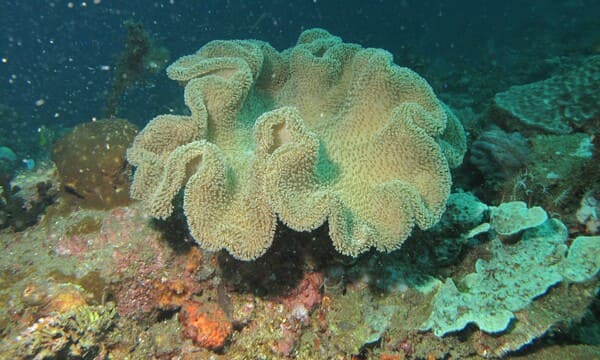
5. Leather Mushroom Coral
Leather Mushroom Coral, a member of the soft coral family, is also known as Green Toadstool Coral, Umbrella Coral or Elephant Ear Leather Coral. Like other corals, leather mushroom coral displays a variety of colors, ranging from brown to cream to deep red. This charming mushroom coral looks like a folded piece of soft leather, and it extends its flower-stalk-like tentacles at night or when foraging. They form a habitat for aquarium/52-marine-animals.html">marine animals, which provide them with the nutrients they need.
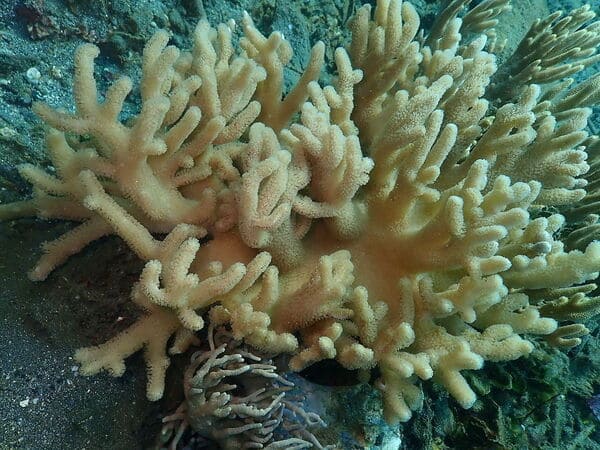
6. Finger coral
Finger corals, also known as soft finger corals, are distributed in waters from the Red Sea to the Pacific Ocean at a depth of about 10 meters. This coral belongs to the group of coral molluscs, order Ascidians. The scientific name of finger coral is Sinularia asterolobata. The appearance of the group is often ivory or bright gray. Its thick fleshy feet grow upward to form a body, and the ends present blunt, finger-like bifurcations.

7. Tube worms
Tube worms, also known as tube-dwelling worms, are large animals that can reach 1-2 meters in length and several centimeters in diameter. Their upper end is a red flesh head, and the lower end is a straight white tube, hence the name tube worms. This shape makes them look like white-stemmed red flowers among giant flowers. Tubeworms rely on symbiotic sulfide-oxidizing bacteria in their bodies to provide nutrition, so they have neither guts nor digestive tracts. Scientists estimate that tube worms are likely to be among the longest-lived animals on Earth, with some individuals possibly living up to 250 years old.

8. Saxifraga shiitake coral
Saxifraga mushroom coral, like the paint in a painter's palette, displays colorful colors in the ocean , including red, orange, purple and green. Among them, the red tiger ear mushroom is particularly rare and the most precious. Different colored saxifraga mushrooms require different care. A type of mushroom coral, green saxifraga has spots on its surface that give it a vibrant green color.
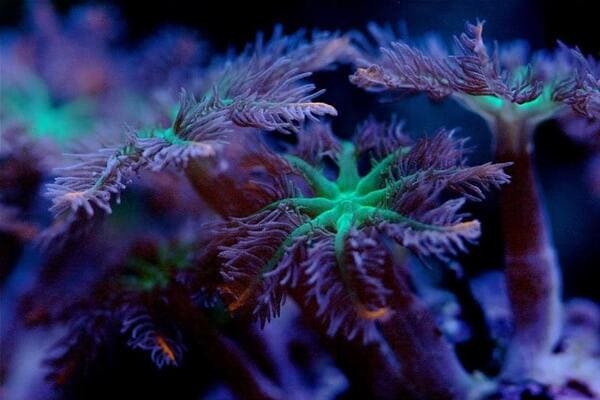
9. Clove polyps
Lilac polyps, also known as glove polyps, are a member of the polyp coral family. These fascinating polyps are found across the Indian and Pacific Oceans and come in a variety of colors including brown, red, pink, white and green. Smaller polyps are generally classified as lilac polyps, while larger ones are generally called glove polyps. Regardless of size, they all have eight tentacles. These polyps rely on the intake of iodine, mysids, planktonic microorganisms, and trace elements. They usually form colonies and have requirements for moderate-intensity light. They can multiply and grow rapidly on coral reefs and rocks.

10. Big Brain Coral
Big Brain Coral is a colorful coral, its colors include gray green, reddish brown, light blue and other colors, and its appearance is like a human brain. They are mainly distributed on the surface of reefs, and some also grow on the sand or pebble ground 40 meters deep underwater. These corals feed on plankton.
The ranking of the most beautiful corals in the world is mainly compiled based on the relevant websites. The appearance characteristics, colors, etc. of the relevant corals are sorted out, and the ranking and recommendation are comprehensively based on the network attention and popularity of the relevant corals. The ranking of the list is only for For reference, if you have any questions, please leave comments/criticisms at the end.
animal tags: coral
We created this article in conjunction with AI technology, then made sure it was fact-checked and edited by a Animals Top editor.